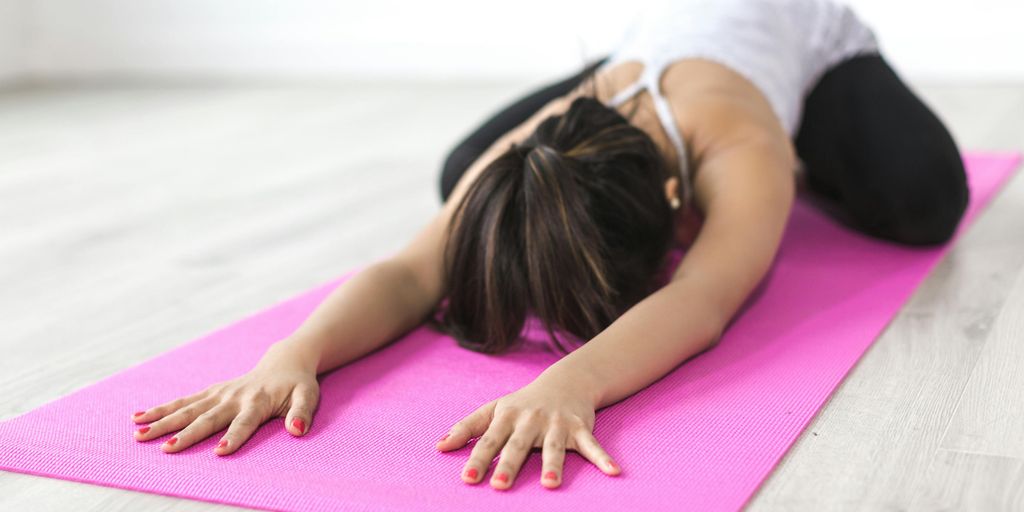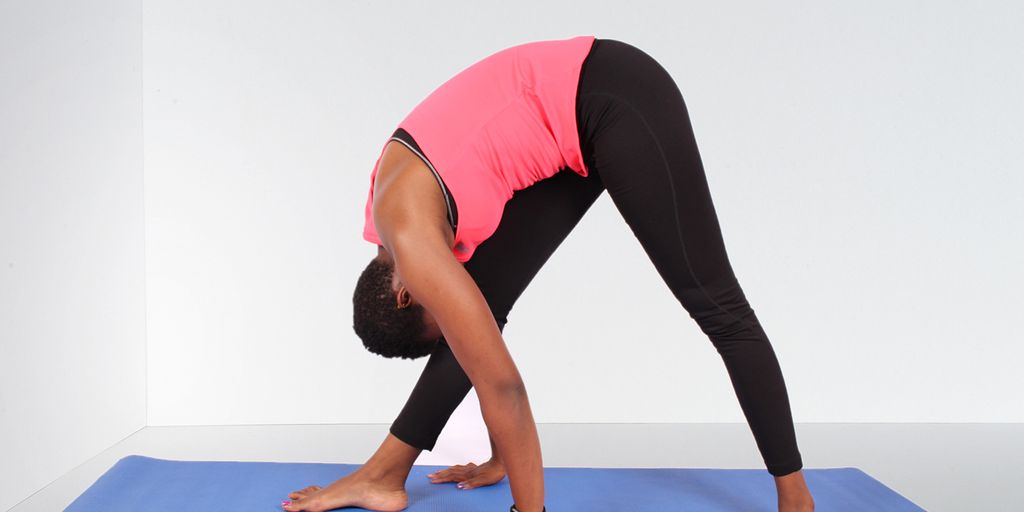
The Ultimate Guide to Choosing the Perfect Rubber Yoga Mat
Choosing the perfect rubber yoga mat can significantly enhance your yoga practice, providing better grip, stability, and comfort. With numerous options available, it's essential to understand the benefits, factors to consider, and how rubber mats compare to other materials. This ultimate guide will help you navigate through the various aspects of selecting the ideal rubber yoga mat for your needs.
Key Takeaways
- Rubber yoga mats offer enhanced grip and stability, making them ideal for various yoga practices.
- Eco-friendly and sustainable, rubber mats are a great choice for environmentally conscious yogis.
- Consider factors such as thickness, texture, and weight when selecting a rubber yoga mat to ensure it meets your specific needs.
- Proper care and maintenance can extend the lifespan of your rubber yoga mat, ensuring it remains in top condition.
- Top brands like Liforme, Manduka, and Jade Yoga provide high-quality rubber mats, while budget-friendly options are also available for those looking for value.
Benefits of Using a Rubber Yoga Mat
Enhanced Grip and Stability
Rubber yoga mats are renowned for their superior grip and stability. This ensures that you can maintain your poses without slipping, even during intense sessions. The natural stickiness of rubber provides a firm foundation, making it ideal for various types of yoga practices.
Eco-Friendly and Sustainable
One of the standout benefits of rubber yoga mats is their eco-friendly nature. Made from natural rubber, these mats are biodegradable and free from harmful chemicals. Choosing a rubber mat means you're making a sustainable choice that benefits both you and the environment.
Durability and Longevity
Rubber yoga mats are known for their exceptional durability. They can withstand regular use without showing signs of wear and tear. Investing in a rubber mat means you'll have a reliable companion for your yoga practice for years to come.
Opting for a rubber yoga mat is not just a choice for better performance, but also a commitment to sustainability and long-term use.
Factors to Consider When Choosing a Rubber Yoga Mat
Thickness and Cushioning
When selecting a rubber yoga mat, thickness and cushioning are crucial for comfort and joint protection. Mats typically range from 1/16 inch to 1/4 inch in thickness. Thicker mats provide more cushioning, which is beneficial for practices that involve a lot of kneeling or lying down. However, they may be less stable for standing poses.
Texture and Surface Finish
The texture of a yoga mat affects its grip and feel. Rubber mats often have a natural, grippy texture that prevents slipping, even during sweaty sessions. Some mats have a smooth surface, while others feature a raised pattern for additional traction. Choose a texture that complements your practice style and personal preference.
Portability and Weight
Portability is an important factor if you plan to carry your mat to classes or travel with it. Rubber mats can be heavier than those made from other materials. Consider a mat that balances weight and durability, ensuring it is easy to transport without compromising on quality.
Remember, the best yoga mat for you will depend on your specific needs and preferences. Take the time to evaluate each factor to find the perfect match for your practice.
Comparing Rubber Yoga Mats to Other Materials
Rubber vs. PVC
Rubber mats provide superior grip, making them ideal for intense yoga sessions. On the other hand, PVC mats are often less expensive but can be slippery and less eco-friendly. Rubber mats are generally more sustainable and offer better performance in terms of stability and comfort.
Rubber vs. TPE
TPE (Thermoplastic Elastomer) mats are known for being lightweight and easy to clean. However, they may not offer the same level of durability and grip as rubber mats. Rubber mats tend to be more robust and provide a more stable surface for various yoga poses.
Rubber vs. Cork
Cork mats are praised for their natural feel and eco-friendliness. They offer good grip when wet but can be less cushioned compared to rubber mats. Rubber mats, on the other hand, offer a balance of grip, cushioning, and durability, making them a versatile choice for different types of yoga practices.
Caring for Your Rubber Yoga Mat
Cleaning and Maintenance Tips
Regular cleaning is essential to maintain the durability and grip of your rubber yoga mat. Use a mild soap and water solution to wipe down the mat after each use. Avoid using harsh chemicals as they can damage the material. Ensure the mat is completely dry before rolling it up to prevent mold and mildew.
Proper Storage Solutions
Store your rubber yoga mat in a cool, dry place away from direct sunlight. Rolling the mat loosely can help prevent creases and cracks. If possible, use a mat bag for added protection. This will not only keep your mat clean but also extend its lifespan.
Avoiding Common Damages
To avoid common damages, refrain from wearing shoes on the mat and keep sharp objects away. Additionally, avoid exposing the mat to extreme temperatures. Following these tips will help you get the most out of your rubber yoga mat.
Taking proper care of your rubber yoga mat ensures it remains a reliable companion for your yoga practice.
Top Brands for Rubber Yoga Mats
Liforme
Liforme is renowned for its high-quality rubber yoga mats that offer exceptional grip and stability. Their mats are eco-friendly and biodegradable, making them a top choice for environmentally conscious yogis. Liforme mats also feature alignment markers, which help practitioners maintain proper form during their practice.
Manduka
Manduka is another leading brand in the yoga mat industry, known for its durable and long-lasting products. Their PRO series mats are particularly popular, offering excellent cushioning and support. Manduka's commitment to sustainability is evident in their use of non-toxic materials and zero-waste manufacturing processes.
Jade Yoga
Jade Yoga mats are celebrated for their natural rubber construction, which provides superior grip and comfort. The brand is also dedicated to giving back to the environment, planting a tree for every mat sold. Jade Yoga mats are available in various thicknesses and colors, catering to different preferences and needs.
Choosing a reputable brand ensures you get a high-quality, durable, and eco-friendly rubber yoga mat that enhances your practice.
Budget-Friendly Rubber Yoga Mats
Affordable Options
When it comes to finding a budget-friendly rubber yoga mat, there are several options that offer great quality without breaking the bank. The IUGA Eco-Friendly Non-Slip Mat is hands down one of the best budget options we've tested for quality and portability. It's super lightweight, coming in at just under 2 pounds, making it easy to carry to and from your yoga sessions.
Value for Money
Investing in a rubber yoga mat doesn't have to be expensive. Many affordable mats provide excellent durability and performance. Look for mats that offer a balance between cost and features, such as enhanced grip and sufficient cushioning. This ensures you get the best value for your money without compromising on quality.
Where to Buy
You can find budget-friendly rubber yoga mats at various online and physical stores. Popular online platforms like Amazon, Walmart, and Target often have a wide selection of affordable options. Additionally, specialty yoga stores may offer discounts or sales on high-quality mats, making it easier to find a great deal.
Remember, a good yoga mat doesn't have to be expensive. With the right research, you can find a mat that meets your needs and fits your budget.
Special Features to Look for in a Rubber Yoga Mat
Non-Toxic Materials
When selecting a rubber yoga mat, it's crucial to ensure that the materials used are non-toxic. Non-toxic mats are free from harmful chemicals like phthalates and heavy metals, making them safer for both you and the environment. This is especially important for those who practice yoga regularly and spend a lot of time in close contact with their mat.
Closed-Cell vs. Open-Cell Structure
Rubber yoga mats come in two main types of cell structures: closed-cell and open-cell. Closed-cell mats are more resistant to moisture and bacteria, making them easier to clean and maintain. On the other hand, open-cell mats offer better grip and absorbency, which can be beneficial for sweaty practices. Consider your yoga practice needs when choosing between these two options.
Design and Aesthetics
The design and aesthetics of your yoga mat can also play a significant role in your practice. Many rubber mats come in a variety of colors, patterns, and textures, allowing you to choose one that resonates with your personal style. Some mats even feature alignment guides to help you maintain proper form during poses.
Investing in a high-quality rubber yoga mat with the right features can greatly enhance your yoga experience, providing both comfort and functionality.
When choosing a rubber yoga mat, it's essential to consider features like durability, grip, and eco-friendliness. At Yune Yoga, we offer a wide range of natural rubber mats that meet all these criteria and more. Explore our collection today and find the perfect mat to enhance your practice.
Conclusion
Choosing the perfect rubber yoga mat is a personal journey that involves considering various factors such as thickness, texture, durability, and eco-friendliness. By understanding your own needs and preferences, you can find a mat that enhances your practice and provides the support and comfort you require. Remember to take your time, do your research, and perhaps even try out a few options before making your final decision. With the right mat, your yoga practice can become a more enjoyable and fulfilling experience.
Frequently Asked Questions
What thickness is ideal for a rubber yoga mat?
The ideal thickness for a rubber yoga mat depends on your personal preference and the type of yoga you practice. Generally, a thickness of 4-6mm provides a good balance of cushioning and stability.
How do I clean my rubber yoga mat?
You can clean your rubber yoga mat by wiping it down with a mixture of water and mild detergent. Avoid using harsh chemicals or submerging the mat in water. Allow it to air dry completely before rolling it up.
Are rubber yoga mats eco-friendly?
Yes, rubber yoga mats are often considered eco-friendly because they are made from natural rubber, which is a renewable resource. Look for mats that are free from harmful chemicals and dyes for a more sustainable option.
Can I use a rubber yoga mat for hot yoga?
Yes, rubber yoga mats are suitable for hot yoga as they provide excellent grip even when wet. However, make sure to choose a mat with a closed-cell structure to prevent sweat from seeping into the mat.
How do I store my rubber yoga mat?
Store your rubber yoga mat in a cool, dry place away from direct sunlight. Rolling it up loosely and securing it with a strap or bag can help maintain its shape and prevent damage.
What are the advantages of a rubber yoga mat over a PVC mat?
Rubber yoga mats offer better grip, are more eco-friendly, and provide a more natural feel compared to PVC mats. They are also generally more durable and biodegradable.


